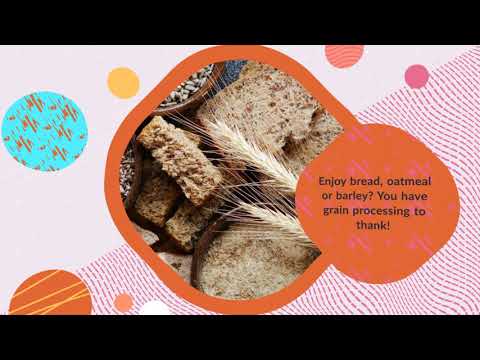With warmer weather finally here, many of us are planning visits to our local farmers’ markets. Visions of piles of fresh fruits and vegetables, bunches of herbs and bakery stands overflowing with loaves of whole-grain breads—it’s practically a no-brainer to be eating closer to the ground in these beautiful summer days after a long winter of heading to our pantries and freezers to make a meal. So it may come as a surprise to you to learn that many of those market-fresh fruits and vegetables—and all those loaves of bread—are considered processed foods.
Processed is a term that’s come to mean a lot of different things to a lot of different people in the food world, and often it’s not perceived in the most positive light. While there are certainly processed foods that don’t hold a ton of nutritional value, many healthy foods have been fortified or enriched to enhance their nutrient values, and frozen or canned at their peak ripeness or milled so that they can actually be edible. And all of these options are types of food processing!
Today, we’re focusing on how whole grains are processed. Let’s take a closer look into how whole-grain foods are freed from their most basic, inedible forms and transformed into a nutritious component of our diets.
Whole grain processing at its finest
Whole grains like brown rice, whole wheat and oats are made from all three edible parts of a grain seed, including the bran, the germ and the endosperm. The bran is the outer skin of the edible seed and contains fiber, B vitamins and antioxidants. The germ is the part of the seed that has potential to sprout into a new plant. It contains healthy fats, minerals, B vitamins and some protein. The endosperm is the largest part of the seed and is composed of mostly starch, since its main duty is to provide energy to the growing plant. With all these nutrients involved, it’s easy to see why it’s important to include whole grains in our diet!
The problem? In their most basic state, these three components are covered by an inedible husk (also called a hull) that protects the seed from potential harm, including too much sun or water, pests and disease. As you might imagine, this husk needs to be removed before we can access the nutrients found in whole grains. That’s where food processing comes into play, in the forms of threshing (which loosens the husk) and winnowing (which gets rid of it). After threshing and winnowing, we’re left with the intact whole grain, which can then be used to make foods like wheat or oat cereals. As you can see, in the end an edible whole grain is also a processed whole grain.
Grain processing can go even further with milling, which grinds grains into flour. In the case of whole-wheat flour, all three parts of the whole grain are milled. To make white flour, the germ and bran are removed during milling, leaving only the starchy endosperm. Milling whole grains into white flour can change the texture and increase the shelf life of grains and grain products, but at the same time it removes some of the healthy nutrients found in a whole grain. Because of this, many refined grains are enriched with vitamins and minerals to bring the food at least up to the amount that would have been found in an intact whole-grain version. However, enrichment often doesn’t involve bringing back the healthy fat, fiber and protein lost when the bran and germ are removed. This is why the Dietary Guidelines for Americans recommend making at least half of our grain intake come from whole grains.
A little more about nutrition
At this point, it’s clear that there are nutritional differences between whole and refined grains, and each type can have a place in our diets and on our pantry shelves. Other processing methods like baking can change the amount of vitamins that are available in the finished grain product. Sprouted grains—bet you didn’t think of those as processed, did you? —also have different nutrient profiles, with some nutrients (like thiamin) being lost during sprouting and some (riboflavin and niacin) being formed. Food processing can also liberate beneficial antioxidants from whole grains, making them more available for our bodies to absorb.
All this information may at first be hard to digest (sorry!), but the key takeaway is that without food processing, it would be next to impossible for us to include whole grains in our diets. “Processed” foods are often vilified in the popular media, but it’s important to remember that not all processed foods are created equal. Next time you’re eyeing the baked goods at the farmers’ market, remember that each of those whole-grain loaves of bread has gone through quite a journey from field to finished food. We have processing techniques to thank for our ability to access many foods’ nutrient-rich, fiber-full benefits.
This blog post was written by and

